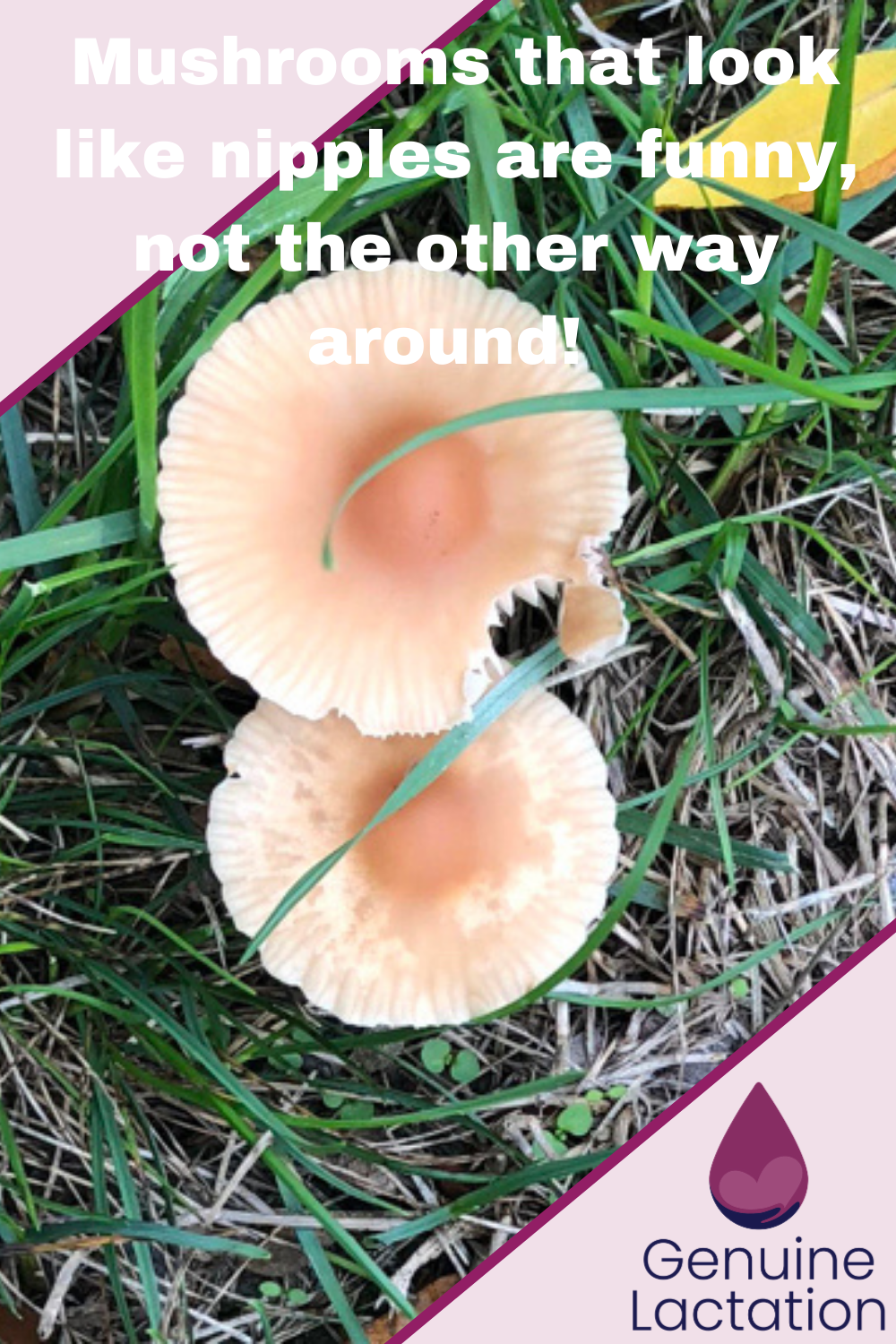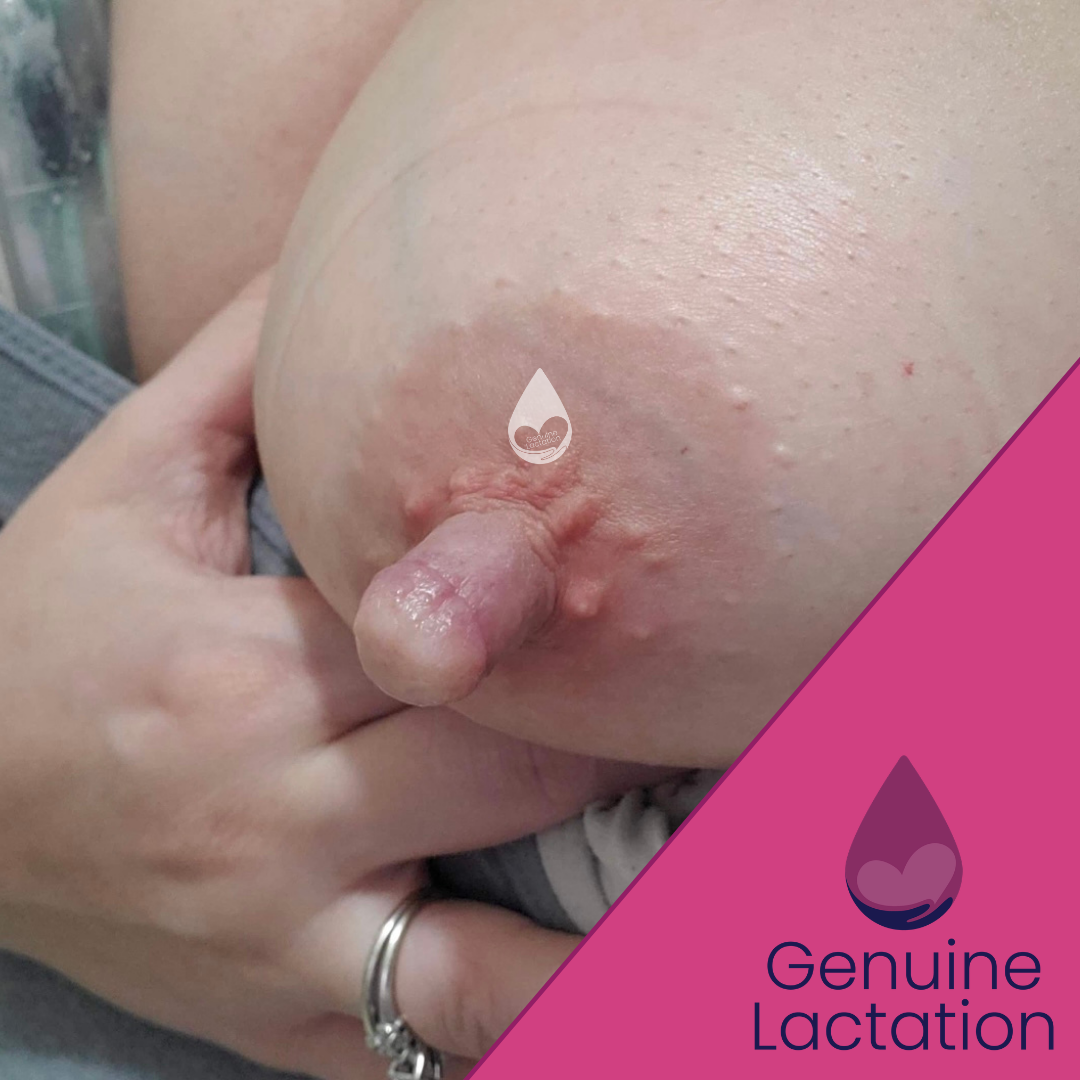Mushroom Nipples and Muffin Nipples
What on earth could muffins and mushrooms have in common with nipples?
Mushrooms that look like they have nipples are funny…
Nipples swollen to look like mushrooms are not funny! They are painful and problematic!
These are fun descriptions of what happens when the nipple exceeds the length of the flange. When there is space beyond the smaller diameter tube for the nipple to swell out of the top of the flange and expand width wise, it causes the nipple to assume the shape of a mushroom or muffin.
Despite the cute names and descriptions, this is actually a problem, and with that poses significant risk to the nipple. The tip of your nipple is not accustomed to the restriction and pressure this type of swelling can cause. This phenomenon is associated with trauma to the tip of nipple, pain, reduced milk output, clogs and an overall unpleasant pumping experience.
The Willow Pump is notorious for this issue given how the constant suction works. The constant suction allows the nipple to expand farther than other pumps and encourages the tissue to expand to fill the width of the flange (hence the popular reference to tater tot nipples.) The actual Willow flanges are fairly long which leaves room at the end of the inserts and cushions used to reduce the diameter of the tube, and if the nipple stretches past the end of the insert or cushion it can quickly expand to the shape of a mushroom or muffin. Some people report feeling a sensation that tingles or feels like ants crawling when this happen, but many feel nothing due to the compression of the tissue and nerves.
The Elvie Pump is also prone to these issues but for different reasons. The Elvie pump has a short flange tunnel, and our options for inserts are limited without cutting the inserts. This creates an opportunity where average to longer length nipples simply can’t be accommodated without the inserts being short and allowing this type of uncomfortable stretching and swelling.
With traditional pumps we don’t see this issue quite as much, and when we do, the fix is normally fairly simple. The flanges we see this with most are the Medela flanges that tend to be extremely short or a particular style of MayMom flange. When we see this with a standard pump, the answer is simply try lower suction and a slightly longer flange length. Given we have a lot more options for flange lengths with a traditional pump, this is much easier to accomplish.
This issue is commonly seen with BeauGen inserts with a higher incidence coming from the practice of using the BeauGen as a turtle neck style cushion. BeauGen Cushions are only about 17-18 mm in length, and given that the average nipple length is 10-12 mm, and the nipple is intended to stretch 2-3 times in length without concern, you can see the BeauGen is very short for average to longer length nipples. When you fold it over like a turtle neck the cushion is now only 8 mm in length with a much more solid edge upon which the swollen nipple tissue can rest and expand width wise. When this happens with BeauGen Cushions, the biggest issue is the flexible cushion embeds itself into the swollen nipple making for a painful and traumatic removal.
Oftentimes, the nipple retracts back past the end of the insert if the swelling is not too severe, and the only signs we have of this happening are strange marks or damage at the tip of the nipple.
Here is a picture example of someone who had their nipples swell out past the end of an insert. You can see the nipple tissue is indented where the nipple had atypical pressure from the way the nipple swelled and the lack of blood flow to the tip of the nipple that expanded past the insert.
Notice that the top of the nipple is more enlarged than the shape of the nipple as a whole.
The white discoloration here is indicative of the blood flow getting cut off to the nipple.
So what should you do if this is happening to you? You need to be professionally fit for flanges to help protect your breastfeeding journey. This can result in extensive damage over time, and ultimately compromise your milk supply. With professional sizing, we can evaluate all of the available options to find a solution for the pump you are using, or we can identify an alternate pump that may better meet your needs.




